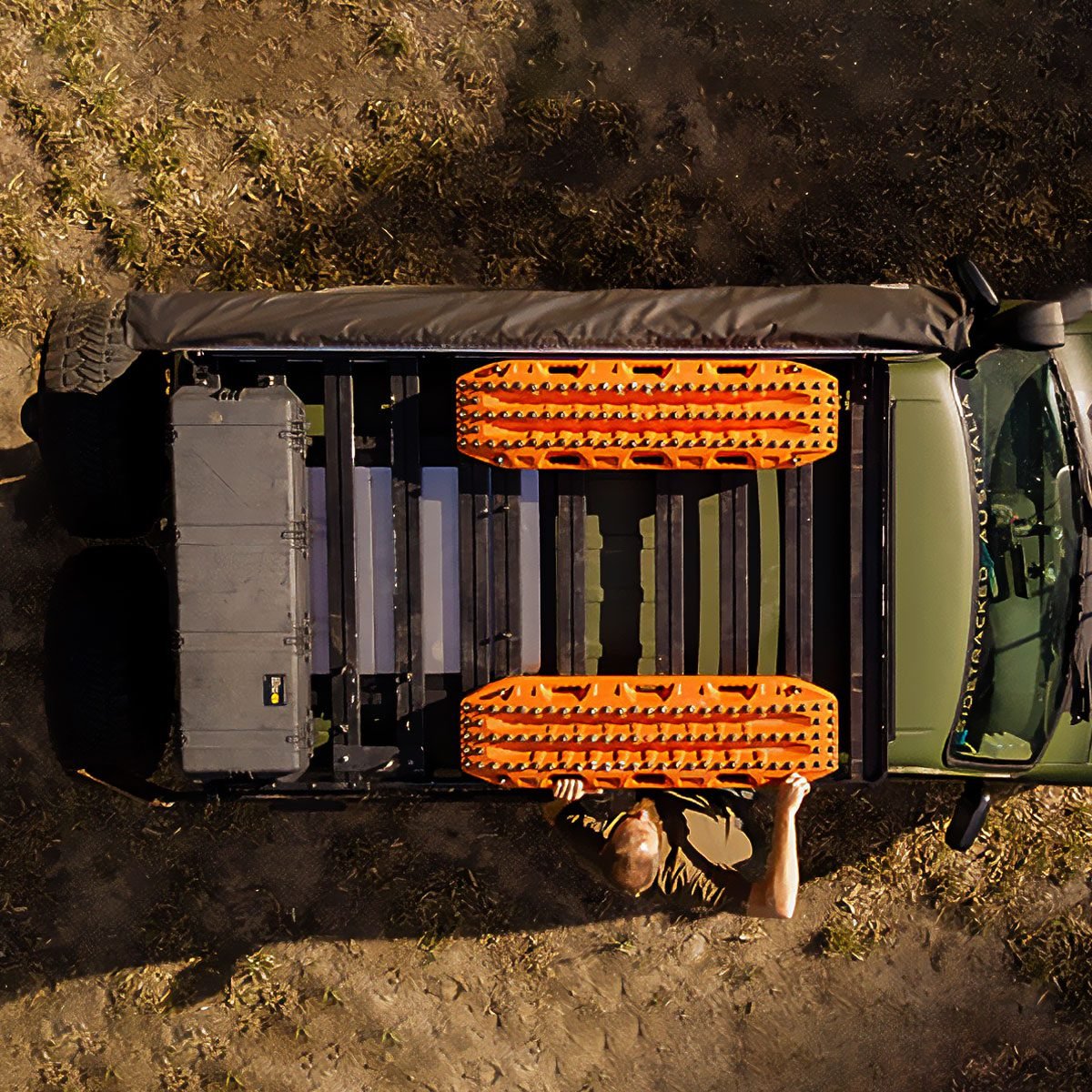The first time I used traction boards, I was stuck in a rusty SUV in the middle of a farm field in late fall, wheels spinning hopelessly in the wet snow and mud. I wasn’t in the driver’s seat, but getting my friend unstuck quickly became a team effort. He drove and I pushed, then vice versa. No luck.
That’s when he mentioned the traction boards in his trunk. After giving him a hard time for not telling me sooner, I took them out and noticed they were made by a company called Maxtrax. He showed me how to use them, and together we wedged them under his wheels. A cold, wet hour later, we cruised out of the field.
Several times since then, I’ve used traction boards to help friends and neighbors free their stuck vehicles. Although they’re not a guaranteed solution to tires stuck in snow, mud or sand, they can certainly help, and are well worth owning if you frequently find yourself in those driving situations.
Here’s what you need to know about traction boards and how they work.
What Is a Traction Board?

Also called sand ladders or recovery boards, traction boards are rectangular plastic panels that provide extra traction for tires in tricky terrain like deep snow, mud or sand.
Design details vary, but most traction boards feature a series of knobs or ridges to give tires as much to grip as possible as you work to free your vehicle. Some boards are rock hard, while others are softer to avoid hurting your tires if your wheels slip.
They’re typically sold in pairs, because you’ll need at least two and preferably four. Most are one to two feet wide and three to four feet long.
Do Traction Boards Work?
Usually. Every time I’ve used traction boards, they’ve done the trick.
But I know of instances where they haven’t worked for others. In those cases, they spun their wheels for several minutes while stuck in snow, melting themselves into a deep rut. Each time, it took a full-sized farm tractor to pull them out.
Clearly, their effectiveness depends on whether you use them correctly. Folks who haven’t used them much often believe you just lay them in front of your tires and you’ll magically get unstuck as soon as you hit the gas. There’s a little more to it than that.
How To Use Traction Boards
- Gather the right tools: Besidestwo pairs of good traction boards, I always recommend people travel with a small but sturdy straight-mouthed shovel. Proper use always involves digging, and moving massive amounts of snow or mud with your hands is no fun. You should also keep insulated rubber boots, gloves and full-body snow gear in your truck if it’s cold. You could be outside your vehicle long enough that this may save your life. Finally, be sure to travel with a fully charged cell phone if you’re going somewhere you might get stuck.
- Assess the situation:Begin by taking a walk around the vehicle, keeping your eyes peeled for danger. Are you right on the edge of a deep ditch, or in one? If so, calling a tow service (or a neighbor with a tractor) is probably a safer bet than attempting to get yourself out.
- Prepare your vehicle: Start by straightening your wheels. If you’re badly stuck, you’ll never get out if your wheels are swiveled. If your vehicle has four-wheel drive, switch into that. If it has low-range (a gear position that decreases speed and increases power), switch into that. too.
- Prepare the terrain: Dig down through the snow, mud or sand in front of all four tires until you can see the bottom where each touches the ground. Remove enough material to place one traction board in front of each tire, angled upward at around 15 to 20 degrees.
- Position your traction boards: Firmly wedge in the lower edge of each traction board under each tire, making sure the tire treads are in solid contact with the tops of the boards. Pack snow, mud or sand under the traction boards as firmly as possible to prevent them from sinking too much as you begin to drive out.
- Engage traction: Get back into your vehicle, then slowly start to give it a little gas. It’s easy to get overzealous at this point and put the pedal to the metal. Resist that urge. If you go too fast, chances are excellent you’ll tear up your tires, melt part of your traction boards and get even more stuck. A light, slow foot on the accelerator is what’s needed. If your tires don’t grab and start pulling your vehicle out right away, let off the gas, then try again. Sometimes a gentle on-off rhythm of the accelerator can get your vehicle rocking and build the momentum you need to pull free. Once you feel your vehicle start moving forward, slowly and gently increase your pressure on the gas as needed to get fully unstuck.
- Repeat if needed: If you only get partially unstuck with your first attempt, retrieve your traction boards and repeat the process. Depending on how far you are from clear pavement, you may need to repeat this several times.
- Stow your traction boards: When you’re free of the snow, mud or sand, clean off your traction boards as best you can. Then stow them in your trunk for the next adventure.
Did you miss our previous article...
https://rsssuperfeeds.com/life-hacks/how-to-paint-behind-a-toilet






